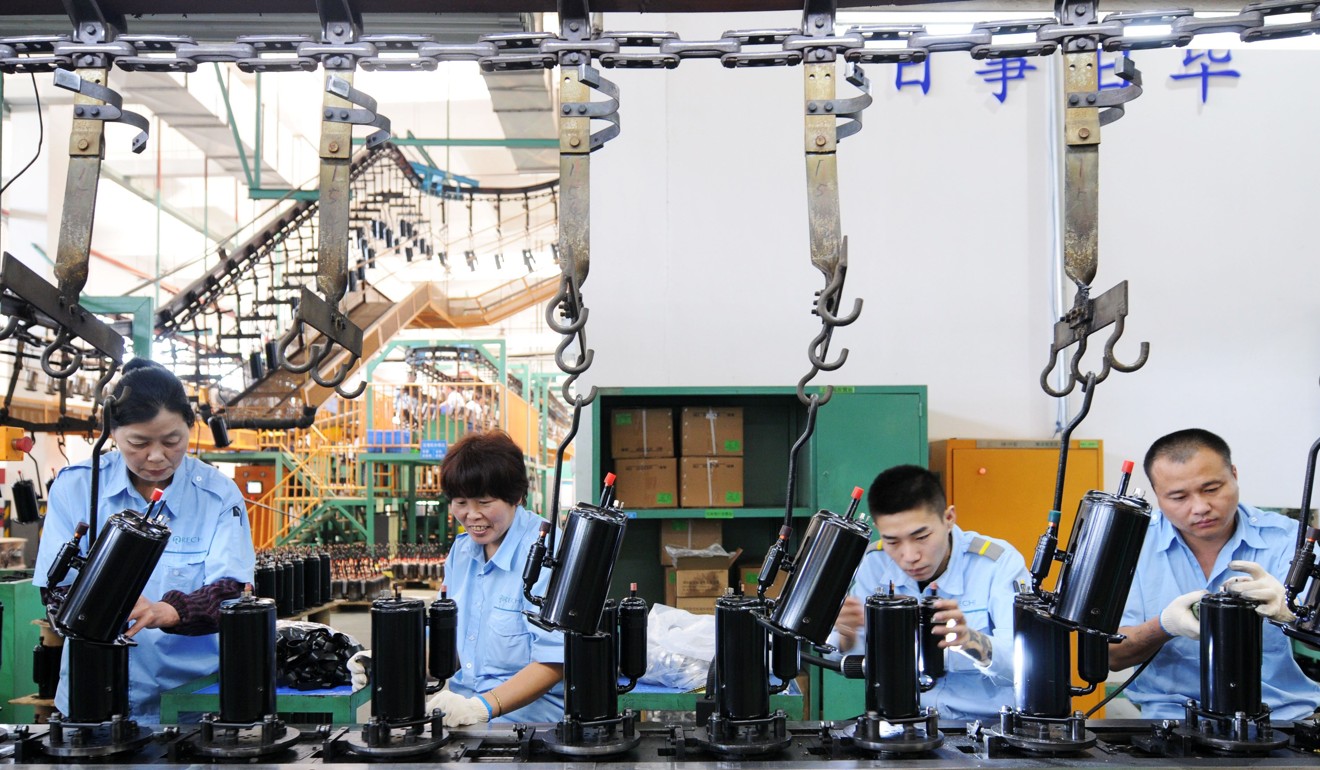
China says industrial profits rose from 2.9 trillion yuan last year to 2.7 trillion yuan this year. Just don’t ask why
Constant tweaks to methodology – without any proper explanation – mean key set of official statistic is the latest to raise eyebrows among analysts
China’s National Bureau of Statistics caused confusion this week when it announced that industrial firms with “scaled production” had made combined profits of 2.7 trillion yuan (US$400 billion) in the first five months of the year, an increase of 16.5 per cent from the same period last year.
But last year the same agency had released a statement saying firms had made profits of 2.9 trillion yuan over the same time frame in 2017.
Rather than seeking to address this apparent contradiction head-on, the agency – whose figures are frequently called into question – only included its explanation in a footnote to the data.
There it stated that the authority adjusted its sample of companies every year and fine-tuned this every month, meaning the actual figures provided were not comparable.
However, its does not clearly explain how these changes are made, leaving analysts questioning the value of the data series.
Only industrial companies with annual revenues of 20 million yuan or more from their main business are covered by the statistics agency.
The number of such companies hit 378,599 in 2016 but started to fall in 2017 after Beijing began requiring factories to cut production capacity or even forcing some to shut down to meet emission standards, according to the statistics agency.

In a statement issued late on Friday trying to clarify its figures, the statistics agency insisted that the industrial profits statistics, a monthly indicator used by economists to measure the country’s economic health, was “true to the facts, reliable and comparable”.
However, analysts questioned whether it had any value if the sample size kept changing and no one knew how the sample had changed.
The statistics bureau does not release detailed sample lists or give a general figure for how many companies are covered every month in the indicator.
Chen Jianheng, an fixed income analyst from China International Capital Corporation, wrote in a note that the official statistics would lose relevance in measuring China’s real economic situation if the statistics agency “only covers those good and surviving businesses while excluding struggling ones”.
Economic figures released by Beijing – from the headline GDP total to property inflation – are often taken with a pinch of salt by economists and analysts, although the statistics bureau is trying to improve the methodology and transparency of its data series.
China is the world’s second biggest economy and the performance of its companies can have implications for the rest of the world, but many of the country’s data sets appear to gloss over problems rather than providing a clear picture of how things stand.
The local authorities in Inner Mongolia, the northeastern province of Liaoning and Binhai, a district in the megacity of Tianjin, have all admitted to faking economic data, and there are suspicions that other cases may yet come to light.
Analysts pointed out that the monthly industrial profits figures served to boost public confidence.
“The headline figures are very eye-catching for the public. If they look too bad, it will trigger a panic in the market. I think the authorities want to avoid that particularly when China’s economic growth is slowing down,” Iris Pang, a China economist from ING Wholesale Banking, said.

China’s retail sales figure for May also raised eyebrows.
According to the statistics bureau, China’s retail sales in May rose by 8.5 per cent compared with the same month last year.
But a comparison of the size of retail sales in May 2018 against May 2017 found the growth rate was only 3 per cent.
In another footnote, the bureau said it had revised last year’s figure based on a recent agricultural census, but did not provide any additional information about the revision.
“Part of this is also really a question of how transparent and accountable do you want to be as a statistical agency, because what we find a little bit frustrating as China analysts is that sometimes we have no idea why certain series [have] stopped being published … These questions reduce confidence and the credibility of the stats. It makes people suspicious,” Louis Kuijs, head of Asia economics at the consultancy Oxford Economics, said.

“We recently had some of the more detailed international trade data delayed and this led to quite a bit of suspicion globally as to why they [China’s customs administration] are doing this … almost a conspiracy theory type of discussion going on.”
He was believed to be referring to a report by Reuters that Beijing had delayed releasing the detailed breakdown of import and export data from April, which is paid-for information provided by China’s customs mainly for commodity traders who use it to develop trading strategies.
The suspension of data came before the third round of trade talks between Washington and Beijing and some of the speculation centred on a claim that officials wanted to avoid weakening the country’s negotiating power. China’s own estimate of its bilateral trade surplus with the United States is around US$100 billion lower than Washington’s own figure of US$357 billion.
According to the World Bank, which created a statistical capacity indicator to monitor individual countries data based on methodology, source data and periodicity, China scored 78.9 last year, down from 80 in 2016.

